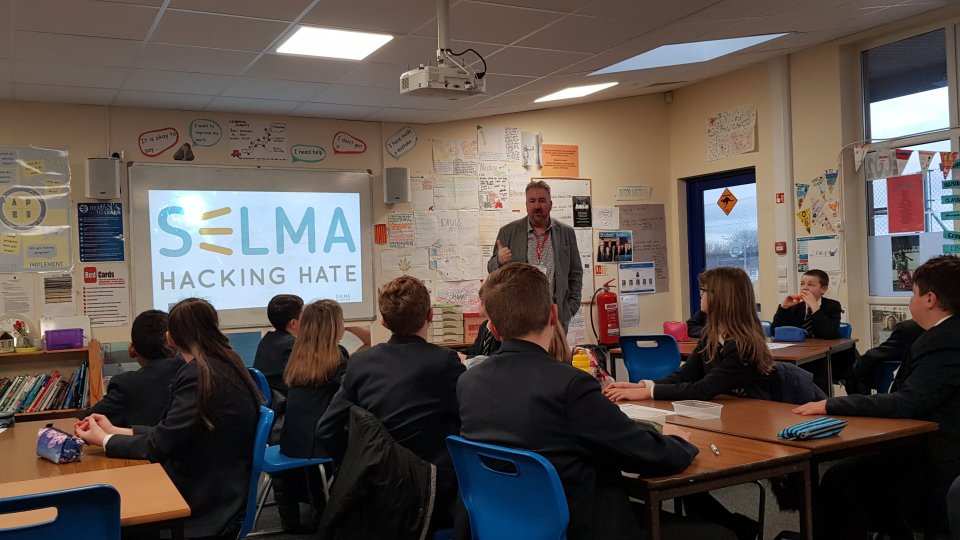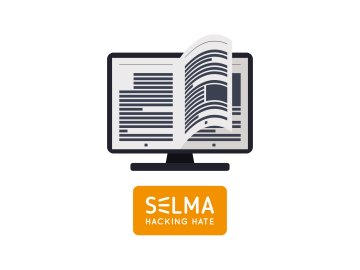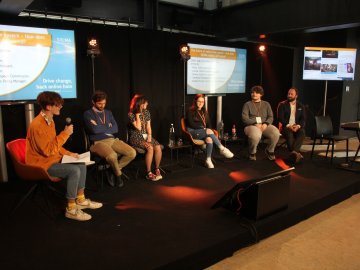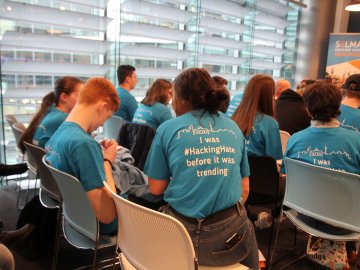The SELMA Toolkit offers over 100 easy-to-access and customisable resources that teachers and other professionals can use to hack online hate speech with children and young people. Aware of the amount of time it can take to browse through all these materials, SELMA partners have developed a series of guides with ready-to-use pathways that ease their access.
The How to make SELMA work in a school context guide contains four pathways specifically designed for school teachers who wish to educate their pupils about online hate speech. Each pathway is addressed to different teacher profiles, based on their previous knowledge of the topic or the age of their students.
Pathway 1: Introduction for younger students (11-13 year old)
This pathway starts with an introduction to the Social and Emotional Learning (SEL) concepts of sentiment and emotions and maps useful vocabulary to help students express their feelings better. The next activity explores how certain images and messages make us feel and how we respond to them. You can watch the People Like You video with your students and discuss how they feel when they see themselves into media headlines.
The pathway continues with a media analysis activity to discover how first impressions can change as we analyse a situation in more detail. The vocabulary learned in the first activity will help analyse and discuss different reactions to photos around the topic of immigration. You can close the session building an informed definition of what hate speech is and what it might mean to students.
Pathway 2: Introduction for Older Students (14-16 years old)
This pathway starts with a reflection on the concept of hate speech right away, focusing on positive and negative feelings, statements that might break the law or not, and the basic concepts around “protected characteristics”. After this discussion, students can develop their own definition of hate speech. The lesson continues reinforcing the concept of protected characteristics while analysing some sensationalist media headlines.
Older students may feel they want to begin to influence change by effectively communicating what they have learned in the previous activities. Encourage them to start disrupting online hate through social media channels and examine behaviour that could be interpreted as hate speech in their immediate social groups.
Pathway 3: Educators new to working with SEL approach
This pathway is addressed at educators approaching Social and Emotional Learning (SEL) for the first time. Thus, it deepens the SEL focus of the Toolkit. The first activities aim to give pupils the keys to build an emotional vocabulary and to match this new vocabulary to abstract examples of hate speech. The activities are based on the RULER programme from Yale Centre for Emotional Intelligence.
The pathway continues exploring how certain images and messages make us feel and how our own temperament and culture often affect how we respond. After that, you can reflect on how we make assumptions based on character and stereotypes. Then, concepts around metacognition are introduced, giving oneself time to regulate personal emotions. The session finishes with media analysis activities to apply the skills developed in the previous exercises to examples of online hate speech.
Pathway 4: Experienced Educators wanting to develop young people’s agency
This pathway suggests an introductory pathway for more experienced educators wanting to develop the agency of young people, focusing on the “How can I influence my people?“ Toolkit theme. It starts with students self-reflecting on their strengths as members of a change-making team to continue putting ideas into practice by developing a counter-narrative campaign. At this point, you can carry out an activity to learn more about planning high-level campaigns.
Those aiming to develop the topic further can continue exploring the last two themes of the Toolkit to consider how to influence change at a global level through canvassing industry providers or local/national government.
Integrating the Toolkit activities across a range of subject areas
The How to make SELMA work in a school context guide also offers advice on how to integrate the Toolkit activities across a range of subject areas. For example, teachers can shape an English and/or foreign language lesson with activities that help building an emotional vocabulary or examine how words and phrases can have different meanings depending on the context. For history lessons, educators can find activities to discuss how traditional mass media can be abused as an instrument for stigmatisation, discrimination, exclusion, and incitement to hatred or violence.
The Toolkit activities can even be embedded into computing and/or maths lessons with the Spotting hate: creating an algorithm activity that help students understand the characteristics of hate speech while learning how algorithms work. Art, design and/or music teachers can find suitable activities for their lessons browsing through the media production focus, which includes activities that invite children to create different outputs.
The guide finishes providing advice on how to involve the whole school in the efforts to tackle the problem of online hate speech. This section outlines some elements to make SELMA part of a whole-school strategy in which children and young people, parents, school staff and the whole school community work together in a more structural and systematic way.
For more information on how to use the SELMA Toolkit in your school, either to run activities as one-off sessions or build more comprehensive and sustained pathways of change, visit the How to make SELMA work in a school context guide and browse the SELMA Toolkit.






